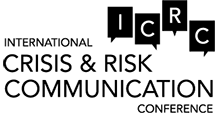
Gifford Blyton Endowed Professor of Oral Communication
University of Kentucky
United States
Deanna D. Sellnow is the Gifford Blyton Endowed Professor of Oral Communication at the University of Kentucky. She also serves the college as Director of Instructional Communication and Research. Her research and teaching focuses on instructional communication, risk and crisis communication, and popular culture. In addition to several top selling basic communication textbooks and her book entitled The Rhetoric of Popular Culture: Considering Mediated Texts, Dr. Sellnow publishes regularly in a variety of international, national, and regional outlets, as well as presents her work in the U.S. and throughout the world (e.g., Vietnam, Indonesia, Singapore, China, England, Germany, Denmark, Ireland, Canada) in the form of competitively selected and invited presentations. She is also principal investigator on an earthquake warning message project funded by the United States Geological Survey.
General Session: Urgent Crisis Communication: Designing Effective Earthquake Warning Messages*
In high risk and crisis situations, receiving the right message at the right time can save lives. Natural disasters certainly qualify as crisis events. Few natural disasters are more constrained by short response time for warning potential victims as earthquakes. Once an earthquake begins, officials often have only a few seconds or minutes to warn people and communities located near the quake’s epicenter that potentially deadly shaking is going to begin and provide instructions for self-protection. To meet this challenge, the United States Geological Survey turned to crisis communication experts and visual communication specialists to design effective early warning messages that can be delivered via a smart phone APP. Given the extremely short time span available to get earthquake warning messages out, such messages must be immediately recognizable, tailored appropriately, and clearly instructive in terms of self-protection.
This project faces several constraints inherent in many crisis contexts. For example, sharing probabilities to help people comprehend their level of risk is constrained by a wide disparity in how probabilities are interpreted. Moreover, disparate levels of risk science literacy and number sense literacy among people and groups create comprehension disparity constraints. Still another constraint stems from the fact that we live in a world where a worried public demands certainty about scientific information regarding potential crises that cannot be fully comprehended. Those charged with communicating early warning messages about earthquakes are challenged by these constraints. This project seeks to address these constraints by merging instructional risk and crisis communication literature and visual design techniques with seismology science information to create, test, and improve early warning and operational forecasting messages about earthquakes. Ultimately, designing and implementing effective instructional risk and crisis communication messages about earthquakes has the potential to save lives.
The presentation proposed will describe how Sellnow and Sellnow have addressed these constraints in developing early warning messages for this project. They will also share sample messages and provide statistical results of their initial round of message testing. Finally, they will generalize beyond our project to include a discussion of practical applications for addressing the consistent constraints of creating warning messages in crisis contexts.
*Timothy Sellnow and Deanna Sellnow co-authored this paper. Timothy Sellnow and Deanna Sellnow will present.
